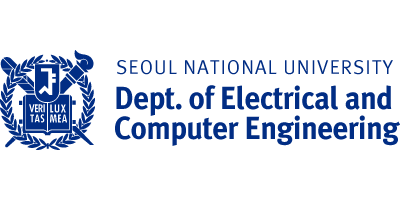Professor at the SNU Dept. of Electrical and Computer Engineering
AI semiconductor, the core technology of the 4th industrial revolution
Performance, operational stability not validated yet
Program environment that captures errors has to be created, and
the technology should be open to normal users to enhance efficiency


Artificial Intelligence (AI) and semiconductor technologies are the core components of the Fourth Industrial Revolution. The product that connects these two essential technologies is the AI semiconductor. Many countries worldwide are fiercely competing in the development of AI semiconductors, and in South Korea as well, there is active domestic AI semiconductor development driven by proactive government support and venture capital investment. As part of the efforts to promote the utilization of domestically developed AI semiconductors, the government is planning to establish data centers making use of these chips and to provide support for the utilization. While these government policies are in the right direction, there are concerns that rushing these initiatives might lead to contrary consequences.
A situation similar to the current stage of AI semiconductor development also occurred in the early to mid-1990s. During that time, the commercialization of parallel processing computers was in its initial stages, and many startup companies were engaged in a technological competition. Parallel processing technology allows computers to utilize multiple CPU cores to increase speed and efficiency, a technology that is now adopted by most computers. However, in the 1990s, it was still an unstable and nascent technology. Back then, as a doctoral student, I took a programming course that involved using a newly developed parallel processing computer created by the professor. However, that computer had numerous glitches, causing even regular programs to malfunction at times. This meant having to invest unnecessary effort in finding work-around solutions to modify normal programs so that they could be executed by the computer. I completed the assignment for the sake of grades, but I never used that computer again once the course was over. Furthermore, the negative reputation of that computer spread widely among students who had taken the course.
Currently, domestically produced AI semiconductors have not been thoroughly validated in terms of performance and operational stability. In this current state, if rushed for widespread usage without proper verification, there is a substantial risk that users might become disappointed, leading to a negative reputation that could hinder the utilization of domestically produced AI semiconductors right from the beginning. Consequently, a cautious approach carried out in stages is essential for the utilization of domestically produced AI semiconductors.
In the first stage, a cold but rational assessment of the domestically produced AI semiconductor must take place. It is essential to provide users with accurate information regarding the performance. Furthermore, through operational safety evaluations, methods to workaround errors should be provided for functionalities with issues. In the second stage, a programming environment that assists in avoiding errors in the domestically produced AI semiconductor should be provided. Libraries offering error bypass routes and example programs utilizing them should be developed and provided, enabling users to program with ease. In the third stage, the domestically produced AI semiconductor is finally made available to programmers. However, even at this stage, it should only be accessible to users who understand semiconductor operations, can avoid errors in initial operations, and can program accordingly. After these stages, finally, should the domestically produced AI semiconductor be made available to the general users. By following this sequence, it is expected that the domestically produced AI semiconductor can be embraced and utilized efficiently.
It is expected that in the future, the domestically produced AI semiconductors will be widely utilized. This is because the price of high-performance AI semiconductors is excessively expensive, leading to many program developers being unable to freely use them. As a result, there are many cases where relatively affordable AI semiconductors are used, but even small-scale applications often take more than a day to process, and large-scale applications can take more than a week. Therefore, even if the performance of domestically produced AI semiconductors does exceed the state-of-the-art devices, it is expected that there will be many users interested in them if their performance is superior to the current low-performance AI semiconductors. The expansion of the utilization of domestically produced AI semiconductors and the resultant process of error correction are essential for the success of AI semiconductor technology. To achieve this, a well-paced, meticulous approach to utilization, backed by government support policies, is necessary.
Source: https://ee.snu.ac.kr/community/news?bm=v&bbsidx=53552&page=3
Translated by: Do-Hyung Kim, English Editor of the Department of Electrical and Computer Engineering, kimdohyung@snu.ac.kr




